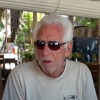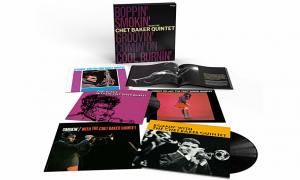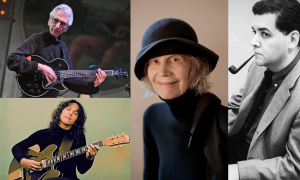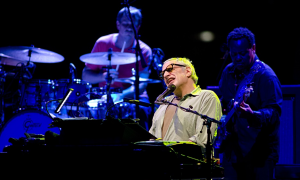Home » Jazz Articles » Highly Opinionated » Jazz Inside And Out: Select Posts from 2013-2015
Jazz Inside And Out: Select Posts from 2013-2015
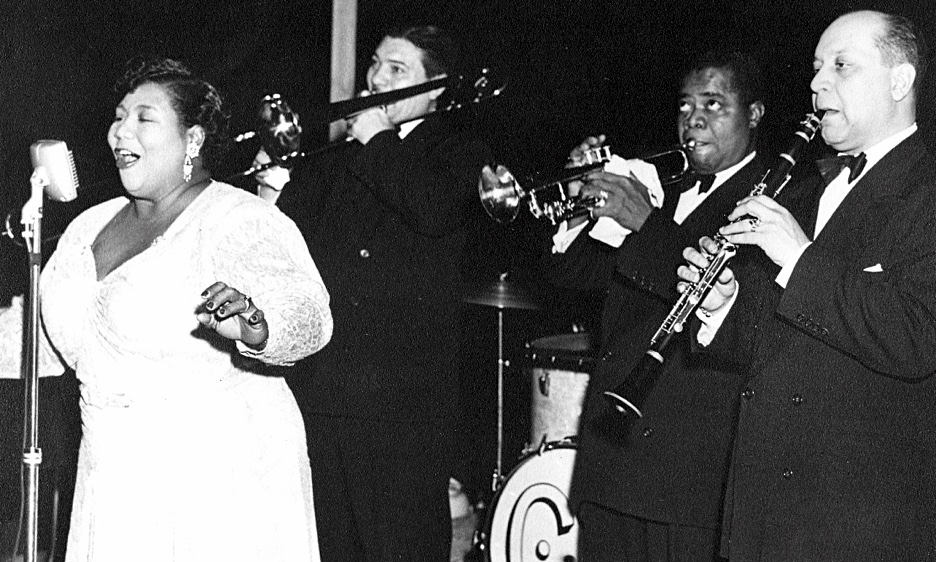
Politics and jazz are my passions, but politics is always transient—and jazz endures. Some of these posts still have relevance, I imagine, and of course your comments are most welcome.
Reflections on the Record Biz
12 August 2013When the record business was good, it was very very good, and companies were willing to take risks on such low-sellers as jazz. They did this to cater to the cause of art and achieve prestige among the musical intelligentsia. And they did it because the jazz market, niche-y and limited though it was, was predictable.
As the market shrunk along with recording formats, the risks became enormous, and now there are only a handful of custom LP fabricators and CD providers, with very few of the Big Boys remaining. Like other musics, jazz today generally comes to us via download in one form or another.
Still, Robert Baird reports ["Staying Power?" in the May 2013 Stereophile], that Sony is resurrecting the venerable Okeh label, founded in 1918 and home to Louis Armstrong and many famous jazz folk. God bless 'em, let us light a Japanese candle. We had stacks of 78-rpm's in my parents' house, including many Okehs.
Baird talks about how it used to be cool to be in the record biz, but in the mid-'60s, insiders knew how cutthroat it was and musicians told endless stories about getting screwed. Today, there are no more cute chicks in the offices or parties in the studios.
I had been writing a music column for The New Leader for about two years in the '60s and knew I wasn't going to teach English and fight for tenure—or write music columns—for the rest of my New York days. I thought seriously about getting into the record biz because I loved music and had met some producers and A&R (artists and repertoire) people that I respected—like Joel Dorn at Atlantic.
So I went to the new, beautifully austere CBS building on 52nd Street to talk with Bob Altshuler, then Columbia's Publicity Director. Bob was a long-time jazz-lover and collector, who had deep knowledge of and power in the biz. He was also a very decent, approachable person, and we had a long talk.
He liked my writing and advised me not to get involved in the record business. Not only did he present the jaundiced view but he sensed from my columns that it would not be a good fit for me. I heard some stories about people I had respected that involved more than payola. I took his advice.
"My God, what happened to the record business?" A friend asked me this a while back. She was not a music person or she would have known better than to ask the question. I'm glad Bob Altshuler isn't here to witness the chaos.
- People are still occasionally buying CDs but not from independent stores, of which there are very few remaining.
- Vinyl is making a comeback to a small group of a) younger folks who think it's cool, and b) hi-fi fans who love the sound of an LP played on a good system. This phenomenon is still small potatoes—which I hope will sprout.
- iTunes is making money in its own right even after the billions it pays out for music rights; and downloads, legal and otherwise, continue apace. Spotify and Pandora, so-called custom music sites on the Internet, offer all kinds of music free and for a fee. Whether they will make it in the long haul we don't yet know.
MP3 is still king of the formats, despite the grousing in some quarters about their sound and resolution. The prognosis is hard to pin down, but someone will figure out how to make better and cheaper downloadable computer music. As Mort Sahl used to say, "The future lies ahead."
David Byrne's How Music Works
15 August 2013This won't be a review exactly, but thoughts generated on reading the above book, which in its way is quite wonderful, though mis-titled and full of padding like the cover.
How Music Works does deal with many kinds of music, but the focus is on Byrne's experience with Talking Heads and in the many other kinds of venues and styles he has pursued. Much of the book deals with his performance life, with valuable revelations and examples of how the music business (live and recorded) works.
The big takeaway for me is the first chapter, which states what I've felt for a long time: both the creation and performance of music and other arts are largely determined by the context in which they are created and presented. (You can read most of Chapter One online at amazon.com by clicking "Look Inside.")
"Context" here means technology, environment, the role of other musics, performance venue, custom and tradition, etc.—a lot of ground—and Byrne's point is that these external forces generate the final product's form and content as much as any particular urge for imaginative self-expression, maybe more so.
Jazz has been hyped to death as the art of improvisation. And it is so much more than that. Hearing records of New Orleans music in my early school days produced a sense of place like nothing else—the parades and marches, the funerals, Jelly Roll Morton playing whorehouse piano, the food, the streets, the smells even—and I didn't get to N.O. until my junior year in high school. Bunk Johnson, Big-Eye Louis Nelson and those old-time players added another dimension—another reality, flesh on the bones—to what I already knew about the city.
All that metadata, if you will, contributed to the kind of music N.O. produced in its heyday and still does. Music is bound by place.
Jazz in bars and nightclubs is quite different from jazz in the concert hall, and the players of course have to know this. Same thing with jazz recorded live and in the studio. Whatever we call jazz has had to become pragmatic and adaptable to the requirements and conditions under which it's produced and heard. Mostly, it has ignored these things.
Some of the recent problems jazz has had with diminished audiences, arcane avant-garde-ism, formulaic playing, and musical navel-gazing seem obviously owing to the fact that the music has become cloistered. Its creators are no longer in the streets and clubs; they are in Berklee learning chordal structures and licks. Or hiding out in Brooklyn playing for their own small audiences. Jazz is in retrogression—not all of it, but too much of it—because it has lost its context.
Kansas City Lightning
25 November 2013Charlie Parker was an elusive cat, and many people have tried to write his story—Gary Giddins, Chuck Haddix, Robert Reisner and Ross Russell among them. I read the last two many years ago when they came out, and now comes Stanley Crouch, who took 30 years to write this book.
It contains some marvelous analyses of Parker's sound, his development, his milieu. And some maddeningly overwritten stuff that attempts to pad out the book as social history. Even though Crouch got some new and interesting material from interviews, Parker's story still has a lot of holes (which may never get filled in).
Stanley is also a tease. The book begins with a fast-forward to the Savoy ballroom when Bird was playing with Jay McShann, but that event takes place after the events of this book, which only takes us through Parker's youth and arrival in New York in 1941. His best and most important years are left for a volume to come.
But when he's on, Crouch is terrific. He knows Parker, with all his hidden side and bravado, his doping and fierce dedication, and he knows the music. Here he talks about how Kansas City jazz players learned and programmed their material:
Each of them would learn things about music on his own, as well as with others—mulling over a piece of material, practicing in a different key, making and listening to suggestions at a rehearsal, meeting the challenges of a stranger's imagination at a jam session, or plotting the sequence of tunes at a bandstand battle the same way a baseball manager would select the pitcher and pick the order of batters. Pull them right in, let them lull awhile, build back up with some kind of surprise, scoop up their attention, get all eyes on the bandstand as things start twirling pleasurably in unexpected directions, until the tension is higher than Dick's hatband.
"Dick's hatband"? Where did that come from? The book is too full of metaphors that are either corny or don't fit: Chicago traffic was "thick as freckles on the face of a redheaded cracker," for instance. And lingering divagations on the importance of D.W. Griffith's Birth of a Nation, the world of trains, Joe Louis, the settlement of various parts of the Midwest, and so on. Some of that is helpful; too much seems to me dragged in to fill out 365 pages because Bird's early story could fully be told in half that length.
Crouch sets Charlie Parker on his way, but never gets to his musical essence or the incredible achievements of his art. For that, we'll have to wait.
Addendum:
I don't want to leave the impression that this book is flawed or that I didn't like it. Kansas City Lightning is just different—mainly because much of it tries to give a background, a flavor, a series of impressions as to what life was like for a sensitive black kid growing up in the 1930s in mid-America. Most of the "social history" that Stanley Crouch includes is stuff I've already heard and understood. But for many readers, those excursions will be valuable background.There is more to life than music, though some of us have trouble recognizing that.
Jim Hall's Passing
12 December 2013Rahsaan Roland Kirk used to talk about life's "bright moments." I had one of those last May when I heard Jim Hall play guitar with his trio at Birdland in New York. Yesterday, I had a black moment when I heard that he had died on Tuesday.
Jim Hall always did things a little differently. At Birdland, I heard his typical delicacy and strength of imagination, but he played fewer notes than in the past and the music was a bit further out.
It was Tom Cole who quoted him in a fine obit for NPR: "The past is a nice place to visit but I would not want to live there," he said. "I like to go straight ahead."
Jazz has lost its finest guitarist. There are his many records, thank God. One of the best is Ron Carter and Jim Hall Live at Village West. If you can find the LP of this (long out of print), please buy it. The recording (1982) is excellent, and these two were born for each other.
"All the Things You Are" may be the most popular standard in jazz, but Jim's harmonic treatment will surprise you. "St. Thomas," heard below, is played very open and, again, moves you way beyond the expected to the felicitous.
Carter's opening choruses of "Embraceable You" on the album are a lesson in using bass accents that also function as timekeeping. The guy loves triplets. Hall's musings on this tune reveal his debt to past guitarists like George Van Eps, plus his own unique turns of phrase.
Here are lessons for all jazz musicians in technique and respect for wonderful, worthy vehicles. We will miss one of our best teachers.
Homage to Yusef Lateef
31 December 2013A most underappreciated jazzman died Monday, December 23, 2013, yet there were many obits and not only in the jazz press. Yusef got more attention in his later years than he did in the '50s and '60s when he played with Mingus, Cannonball Adderley and others you know.
His music then was more traditional, steeped in the blues with Detroit rhythms, but even in the '50s he loved experimenting with new instruments for jazz—flutes, oboes, the bassoon, all kinds of reeds—and this urge drove him into finding new paths with instruments and sounds from the Middle East, Asia, India, Africa.
Some of his best records were made in the '70s for Atlantic. If you can get hold of The Complete Yusef Lateef, it shows his range even then. "In the Evening," a blues played on oboe, is classic.
I honor him for being one of the few to bring world music to jazz, not as a corrupting influence but as a supplement to the jazz language. Yusef was an explorer. He "delved into electronics, crossover styles, Turkish finger cymbals, Chinese gongs, African drums and all manner of ethnic flutes and other instruments from across the globe."
Not all of that succeeded, in my view, but he was a beautiful man who made open improvisation work while never forgetting the values of the blues and the substance of jazz.
Satchmo at My House
18 April 2014Last month saw the opening in New York of Satchmo at the Waldorf, a one-man show with the acclaimed actor John Douglas Thompson playing Louis. The reviews have been exceptional. It's a show that demonstrates how Armstrong walked the line between artist and entertainer as well as the "racial and generational perspectives in the daunting cultural divide Armstrong straddled" (Andy Webster's review in the Times). I want to see it but I'm in Mexico!
Louis was everybody's hero in the 1950s. In the memoir I'm writing his band played at a party given by my parents. Even then, at one of his musical peaks, he could please a crowd—not by Tomming but by being genuine. Here are some recollections.
My father, when he was not golfing and playing cards, was a businessman who loved jazz music and in his own way promoted it. We lived in Highland Park, about twenty-five miles from Chicago in a somewhat grand house with fourteen rooms, servants quarters, nine acres of lawn and woods, reflecting the whole '50s notion of a family's success and good taste. It was not always an idyllic place to grow up in, but it did represent the early musical center of my life.
There, in 1950, my parents and another couple gave a party that featured Louis Armstrong and his then-current All Stars: Barney Bigard, clarinet; Jack Teagarden, trombone; Earl Hines, piano; Cozy Cole, drums; Arvell Shaw, bass; and Velma Middleton, the large lady of song. Over a hundred people showed up to applaud and fawn over Louis, who in turn fawned over them. I was about fifteen, and my friends snuck in and sat on the lawn. It was a summer night, and the music just sparkled.
You can hear a similar group (with the great Big Sid Catlett drumming but without Hines) on Satchmo at Symphony Hall (1947). Yet jazz played live, outside, and at a house party is music of a higher order. During breaks, the band came in from the terrace for food and drink. One could observe Teagarden's famous trombone case, which provided space for a clean shirt and a bottle of gin. Louis told stories and talked about his marijuana conviction years before.
There were few tunes then with lyrics as explicit as "Black and Blue," which Louis frequently sang, as he did that night.
Cold empty bed, springs hard as lead,
Feels like ol' Ned, wished I was dead.
What did I do to be so black and blue?
Even the mouse ran from my house.
They laugh at you and scorn you too.
What did I do to be so black and blue?
I'm white inside but that don't help my case.
'Cause I can't hide what is in my face.
How would it end, ain't got a friend.
My only sin is in my skin.
What did I do to be so black and blue?
As kids we heard and understood these words but didn't take them literally or seriously. They were part of a song we regarded as entertainment, and we weren't out to change the world.
In high school four or five of us made up a tight group of jazz aficionados. Trips to the city with fake IDs provided regular doses of Art Hodes and the old-timers, plus Ellington, Basie, any jazz we could find, even Baby Dodds, the great New Orleans drummer who had played with Louis in the early days. We heard him one night in a small, dingy West Side ballroom.
Exposure to this culture was a big part of my privileged upbringing. Jimmy, one of our group, got us into the Chicago recording session for Louis Armstrong Plays W.C. Handy, (1954) one of Armstrong's finest records of the time that George Avakian produced. We sang background on a tune or two and observed Louis both clowning and being very professional. Few got to see that all-business side of him.
To Stream or Not to Stream
2 August 2014At the end of June I wrote a piece here covering the onset of music streaming services. "How Do You Get Your Music?" talked about the likely growth of music streaming and some of its downsides for jazz and classical listeners. For those niche audiences—classical, jazz and some genres of folk—there are lots of downsides.
Scott Timberg's recent article in Salon points up a number of these. And he offers that it's not just streaming that's at fault; it's the "digital era" that takes control away from musicians and listeners in favor of giant mega-distributors, the Googles and the Apples.
But between low royalties, opaque payout rates, declining record sales and suspicion that the major labels have cut deals with the streamers that leave musicians out of the equation, anger from the music business's artier edges is slowing [sic] growing. It's further proof of the lie of the "long tail." The shift to digital is also helping to isolate these already marginalized genres: It has a decisive effect on what listeners can find, and on whether or not an artist can earn a living from his work.
Besides paying very low rates, the streamers leave jazz and classical pretty much out in the cold. They don't do deals with the indie companies that these folks record with, and they don't provide the metadata that people need to search out what they want to hear. The problem is especially acute with classical.
Say you're looking for a bedrock recording, the Beethoven Piano Concertos, with titan Maurizio Pollini on piano. Who is the "artist" for this one? Is it the Berlin Philharmonic, or Claudio Abbado, who conducts them? Is it Pollini? Or is it Beethoven himself? If you can see the entire record jacket, you can see who the recording includes. Otherwise, you could find yourself guessing.
Streaming services are made to serve the mega-markets, pop, country and hip-hop. You aren't going to find sidemen Bill Evans or John Coltrane listed for Kind of Blue. That's a Miles Davis record. Do sidemen get paid when their stuff is streamed? Of course not. Are jazz radio playlists on Billboard—or any other consistent, searchable database? Of course not.
The music just doesn't fit the streaming services model. Whether and how niche musics can create their own streaming services is still a question without an answer.
Even Great Ones Make Mistakes
19 April 2015Readers of this blog should know that I am a fan of Miguel Zenon, formerly one of SF Jazz's resident artistic directors. He is a superb musician whom I was fortunate to hear last year playing with Danilo Pérez. He was also a founding member of the SFJAZZ Collective in 2004.
For that band, Miguel recently wrote an arrangement of the fine Joe Henderson tune, "Recorda Me," which he explains below. He had the band play a bass line with "Afro-pop energy" first, only coming to the melody later as a kind of release. An interesting idea. And a good band: Miguel, alto; David Sanchez, tenor; Avishai Cohen, trumpet; Robin Eubanks, trombone; Warren Wolf, vibes; Edward Simon, piano; Matt Penman, drums.
I don't think the experiment with the extended bass line works very well. The tune is just not grounded and has little sense of direction. For those who know the changes to "Recorda Me" and can play them in their heads, it may work better. The improvisations over the bass line have no context.
Here's a brilliant 1985 version of the tune with Joe Henderson, Freddie Hubbard, Herbie Hancock, Ron Carter, Tony Williams, and Bobby Hutcherson.
I think the comparison of these two renditions illustrates what has happened to jazz in the intervening years. The music has become more experimental, less powered by a sense of form. And the quality of the improvisations is just not close to what it was—my God, thirty years ago.
There are many reasons why jazz is in the doldrums these days. One of these is certainly the push beyond formalism. Maybe it's saying the obvious, but the best jazz has always been grounded by giving its listeners a sense of structure: where the tune is going and why. Miguel Zenón should know that.
New York as Jazz Capital
21 June 2015Having just returned from a week of feasting on great jazz in NYC, I've been thinking about the implications of that city's being the capital, the focus, the heart of jazz. It has been that way for more years than I can count, and today it's even more so the center of jazz performance and production, the creative base.
I've been going to New York for music since I was a kid in the '50s, but I find the scene has never been so lively as it is today. Harlem is coming back strong with Minton's and a number of less-fancy clubs; Brooklyn is having its second jazz renaissance; and Manhattan has fine music all over town—from Smoke at 106th St. to The Stone on East 2nd St. The established clubs get a good draw every night.
Most jazz recording comes out of New York venues. The best players are there. The largest and hippest audiences are there. So what's wrong with this picture?
Plenty, I think. For one thing, the rest of the country (with the exception of Chicago, L.A. and San Francisco) gets to hear mostly mainstream or traditional jazz when it can hear live music at all. There is not much contemporary live jazz in the hinterlands. The audiences for such are just not there, and touring is too expensive for most contemporary New York musicians, who live on a shoestring anyway. The bigger so-called jazz festivals that have sprouted across the US play little of what I'd call jazz.
As the music business has become super-commercial, jazz doesn't fit anymore, either in terms of style or audience. Live jazz flourishes in small venues, not gargantuan spectacles. I think there are plenty of jazz lovers out there, but how to reach them, with the recording and distribution of music still in turmoil, is a big problem.
Finally, an arts culture needs money to thrive, and New York has become a fountain of money, to fund even offbeat endeavors like jazz. Other places are not so lucky.
Yes, we are blessed with having New York as the creative jazz center it is. Some of that energy spills over into other cities in the Northeast, but the rest of the country is poorly served.
Any ideas on how that might change?
Jazz and Politics
29 November 2015I just got back from a trip to the US (Phoenix) which, coming from Mexico, is always a bigtime cultural shock. Likewise, it's hard to see how something like jazz can survive in an atmosphere permeated by Colorado Springs psychos, cops who kill black kids, Trump's latest lies, and all the xenophobic rantings of the right.
Jazz is a function of liberal culture, and the US seems to be undergoing a liberal collapse. The liberals have become elitists and are very much on the defensive. One wonders if Bill Clinton is still playing the saxophone. How many Evangelical Christians have jazz collections? Imagine Ben Carson digging Coltrane.
With a few exceptions, jazz has never been part of politics. It doesn't fit with politics. Jazz is sophisticated music with a complex emotional component. It isn't meant to send sharp political messages, although some of its great practitioners have occasionally used it that way: Billie Holiday (Strange Fruit), Max Roach (Freedom Suite), Mingus (Fables of Faubus).
Like the liberals, jazz has lost a tremendous share of its audience. And it has become a music largely by and for an elite group of musicians and older fans. I think most of us have a liberal bias, and we are accustomed to hearing jazz live or on LP and CD, both of which are vehicles whose eras have passed.
So jazz has become an art music for those committed, to one degree or another, to its appreciation and preservation. It is music for the elites, not the masses—and it has been that for a long time now. While we fans and critics were lamenting the decline of album sales, pop music had turned to individual tunes (iTunes, yes) as its unit of sale. Notwithstanding that, as many maintained, jazz is best heard as a program, a cycle of tunes, on good sound equipment—another casualty of our digital era.
Like classical music, jazz moves us not through simple affective responses but through a complex process of emotional identification. Pace rock and country, it requires listening with attention and some prior exposure to its language. Younger people don't make this connection easily. And they don't have time for it; they are too busy with their phones.
Jazz will survive, but it will always be a niche music and that should be enough for most of us. US politics will be another, much more problematic story.
Tags
Highly Opinionated
John Goodman
New Orleans
Jelly Roll Morton
Bunk Johnson
Charlie Parker
Jay McShann
Kansas City
Rahsaan Roland Kirk
Jim Hall
Birdland
Cannonball Adderley
Chicago
Barney Bigard
Jack Teagarden
Earl Hines
Cozy Cole
Arvell Shaw
Sid Catlett
Bill Evans
John Coltrane
Miles Davis
Miguel Zenon
Danilo Perez
SFJAZZ Collective
Joe Henderson
David Sanchez
Robin Eubanks
Warren Wolf
Edward Simon
Matt Penman, bass; {{Obed Calvaire
Freddie Hubbard
Herbie Hancock
Ron Carter
Tony Williams
Bobby Hutcherson
san francisco
PREVIOUS / NEXT
Support All About Jazz
 All About Jazz has been a pillar of jazz since 1995, championing it as an art form and, more importantly, supporting the musicians who make it. Our enduring commitment has made "AAJ" one of the most culturally important websites of its kind, read by hundreds of thousands of fans, musicians and industry figures every month.
All About Jazz has been a pillar of jazz since 1995, championing it as an art form and, more importantly, supporting the musicians who make it. Our enduring commitment has made "AAJ" one of the most culturally important websites of its kind, read by hundreds of thousands of fans, musicians and industry figures every month.

